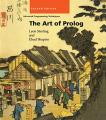
Natural Language Processing Techniques in Prolog
by Patrick Blackburn, Kristina Striegnitz
Publisher: Union College 2002
Description:
Contents: Finite State Automata; Finite State Parsers and Transducers; Finite State Methods in Natural Language Processing; Recursive Transition Networks (RTNs); RTN transducers and ATNs; Definite Clause Grammars; Bottom Up Parsing; Top Down Parsing; Using Bottom Up and Top Down Information for Parsing; Passive Chart Parsing; Bottom-up Active Chart Parsing; Top-down Active Chart Parsing; Feature Structures; Parsing Feature-based Grammars; Natural Language Generation -- A Top-down Generator.
Download or read it online for free here:
Read online
(online html)
Similar books
 Building Expert Systems in Prolog
Building Expert Systems in Prologby Dennis Merritt - Amzi! inc.
This book is designed to teach you how to build expert systems from the inside out. The author presents the various features used in expert systems, shows how to implement them in Prolog, and how to use them to solve problems.
(18603 views)
 The Art of Prolog
The Art of Prologby Leon S. Sterling, Ehud Y. Shapiro - The MIT Press
Hitherto, knowledge of how to use Prolog for serious programming has largely been communicated by word of mouth. This textbook sets down and explains for the first time in an accessible form the deeper principles and techniques of Prolog programming.
(5767 views)
 The Power of Prolog
The Power of Prologby Markus Triska - metalevel.at
The goal of this material is to bridge the gap between the great Prolog textbooks of the past and the language as it currently is, several decades after these books were written. You will see that many limitations of the past are no longer relevant.
(6721 views)
 Prolog and Natural-Language Analysis
Prolog and Natural-Language Analysisby F. C. N. Pereira, S. M. Shieber - Center for the Study of Language
A concise introduction to logic programming and the logic-programming language Prolog both as vehicles for understanding elementary computational linguistics and as tools for implementing the basic components of natural-language-processing systems.
(21245 views)